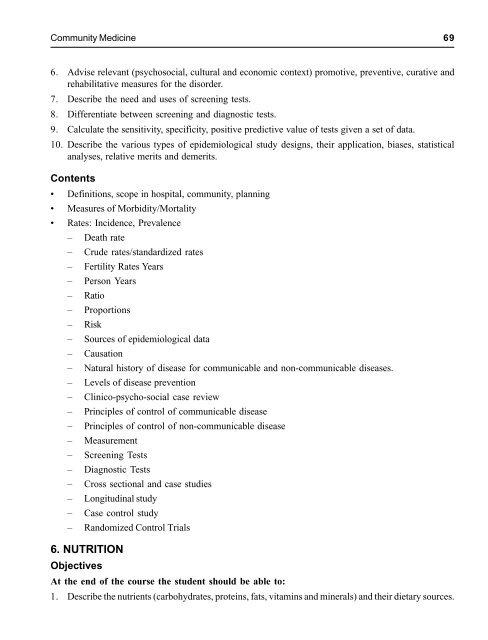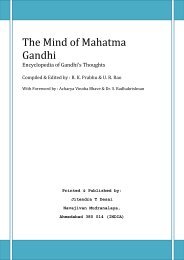Syllabus - MBBS
You also want an ePaper? Increase the reach of your titles
YUMPU automatically turns print PDFs into web optimized ePapers that Google loves.
Community Medicine 69<br />
6. Advise relevant (psychosocial, cultural and economic context) promotive, preventive, curative and<br />
rehabilitative measures for the disorder.<br />
7. Describe the need and uses of screening tests.<br />
8. Differentiate between screening and diagnostic tests.<br />
9. Calculate the sensitivity, specificity, positive predictive value of tests given a set of data.<br />
10. Describe the various types of epidemiological study designs, their application, biases, statistical<br />
analyses, relative merits and demerits.<br />
Contents<br />
• Definitions, scope in hospital, community, planning<br />
• Measures of Morbidity/Mortality<br />
• Rates: Incidence, Prevalence<br />
– Death rate<br />
– Crude rates/standardized rates<br />
– Fertility Rates Years<br />
– Person Years<br />
– Ratio<br />
– Proportions<br />
– Risk<br />
– Sources of epidemiological data<br />
– Causation<br />
– Natural history of disease for communicable and non-communicable diseases.<br />
– Levels of disease prevention<br />
– Clinico-psycho-social case review<br />
– Principles of control of communicable disease<br />
– Principles of control of non-communicable disease<br />
– Measurement<br />
– Screening Tests<br />
– Diagnostic Tests<br />
– Cross sectional and case studies<br />
– Longitudinal study<br />
– Case control study<br />
– Randomized Control Trials<br />
6. NUTRITION<br />
Objectives<br />
At the end of the course the student should be able to:<br />
1. Describe the nutrients (carbohydrates, proteins, fats, vitamins and minerals) and their dietary sources.



